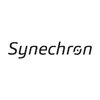Java Technology Lead
20+ Java Technology Lead Interview Questions and Answers

Asked in Quess

Instance variables of an object in JVM are stored in the heap memory.
Instance variables are stored in the heap memory allocated for the object.
Each object has its own copy of instance variables.
Instance variables are accessed using object references.

Asked in Quess

Factory pattern creates objects without exposing the instantiation logic, while Abstract Factory pattern provides an interface for creating families of related or dependent objects.
Factory pattern creates objects through a common interface, while Abstract Factory pattern creates families of related objects.
Factory pattern uses a single method to create objects, while Abstract Factory pattern uses multiple methods to create families of objects.
Factory pattern is a single metho...read more

Asked in Persistent Systems

Q. How do you define a 'many-to-many' relationship in Hibernate when there are no common columns between two tables?
Many-to-many relationship in Hibernate without common columns
Create a third table with foreign keys to both tables
Use @ManyToMany annotation in both entity classes
Specify the join table name and column names in @JoinTable annotation

Asked in Quess

A marker interface in Java is an interface with no methods, used to mark classes for special treatment.
Marker interfaces are used to provide metadata to the classes implementing them.
Examples of marker interfaces in Java include Serializable and Cloneable.
Marker interfaces are typically empty interfaces with no methods.

Asked in Persistent Systems

Q. How do you find the second largest integer in an array without using collections or sorting?
Find second largest integer in an array without sorting or using collections.
Iterate through array and keep track of largest and second largest integers.
Compare each element with current largest and second largest integers.
Return second largest integer.

Asked in Persistent Systems

Q. How does the PUT method behave when there is no data to update?
PUT method updates data if available, else returns success with no changes.
PUT method updates the resource if it exists, else creates a new resource
If no data is provided, the server returns a success response with no changes made
Example: PUT /users/1 with empty body will return success with no changes if user with id 1 exists
Java Technology Lead Jobs




Asked in Persistent Systems

Q. How do you ensure that some default code executes when the Spring Boot application starts up?
Use @PostConstruct annotation or implement CommandLineRunner interface
Use @PostConstruct annotation on a method that needs to be executed on startup
Implement CommandLineRunner interface and override run() method
Add the code that needs to be executed on startup in the method annotated with @PostConstruct or in the run() method
Example: @PostConstruct public void init() { //code to be executed on startup }
Example: public class MyApp implements CommandLineRunner { public void run...read more

Asked in Persistent Systems

Q. 1) How to communicate between two micro services?
Microservices can communicate through synchronous or asynchronous protocols like REST, gRPC, or message brokers.
Use RESTful APIs for synchronous communication
Use message brokers like Kafka or RabbitMQ for asynchronous communication
gRPC can be used for high-performance synchronous communication
API Gateway can be used to manage communication between microservices
Consider using service mesh like Istio or Linkerd for more advanced communication needs
Share interview questions and help millions of jobseekers 🌟


Asked in Persistent Systems

Q. What's the difference between @Service and @Component annotations?
The @Service annotation is a specialization of the @Component annotation and is used to indicate that a class is a service.
Both @Service and @Component annotations are used to indicate that a class is a Spring-managed component.
@Service is a specialization of @Component and is used to indicate that a class is a service layer component.
The @Service annotation is used to add a layer of abstraction between the controller and the DAO layer.
The @Service annotation is used to provi...read more

Asked in Quess

Kubernetes follows a client-server architecture with a master node and worker nodes.
Kubernetes architecture consists of a master node and multiple worker nodes.
The master node manages the cluster and schedules applications.
Worker nodes run the applications and communicate with the master node.
Kubernetes uses etcd for storing configuration data.
Components like kube-apiserver, kube-controller-manager, kube-scheduler, and kubelet are part of the architecture.

Asked in Persistent Systems

Q. What do the HTTP error codes 400 and 500 represent?
HTTP error codes 400 and 500 represent client and server errors respectively.
HTTP error code 400 indicates a client-side error, such as a bad request or invalid input.
HTTP error code 500 indicates a server-side error, such as an internal server error or database connection issue.
Other common client-side errors include 401 (unauthorized), 403 (forbidden), and 404 (not found).
Other common server-side errors include 503 (service unavailable) and 504 (gateway timeout).

Asked in Persistent Systems

Q. How does a ConcurrentHashMap work internally?
Concurrent Hash Map is a thread-safe implementation of Hash Map.
Uses multiple segments to allow concurrent access
Each segment is a separate hash table with its own lock
Segments are dynamically added or removed based on usage
Uses CAS (Compare and Swap) operation for updates
Provides higher concurrency than synchronized Hash Map

Asked in Synechron

Q. Write a custom functional interface and then convert it to a Java 8 functional interface using Java 8 lambdas.
Create a custom functional interface and convert it to a Java 8 functional interface using lambdas.
Define a custom functional interface using the @FunctionalInterface annotation.
Example: interface MyFunctionalInterface { void execute(); }
Implement the interface using a lambda expression.
Example: MyFunctionalInterface myFunc = () -> System.out.println('Hello, World!');
Invoke the method: myFunc.execute();

Asked in Persistent Systems

Q. How do you define a composite Primary key?
A composite primary key is a primary key that consists of two or more columns.
A composite primary key is used when a single column cannot uniquely identify a record.
It is created by combining two or more columns that together uniquely identify a record.
Each column in a composite primary key must be unique and not null.
Example: A table of orders may have a composite primary key consisting of order number and customer ID.

Asked in Quess

An API Gateway is a server that acts as an API front-end, receiving API requests, enforcing throttling and security policies, passing requests to the back-end services, and then passing the response back to the requester.
Acts as a single entry point for all API requests
Handles authentication, authorization, and rate limiting
Can transform requests and responses
May aggregate multiple back-end services into a single API endpoint

Asked in Quess

Kafka Streams is a client library for building real-time, highly scalable, fault-tolerant stream processing applications.
Kafka Streams allows developers to process and analyze data in real-time as it flows through Kafka topics.
It provides a high-level DSL for creating stream processing applications without the need for a separate processing cluster.
Kafka Streams supports stateful processing, windowing, and joins, making it suitable for a wide range of use cases.
Example: Using...read more

Asked in Synechron

Q. Hashmap, hashset and list problem to find common elements
Use HashMap and HashSet to efficiently find common elements between two lists of strings.
HashMap for Counting: Use a HashMap to count occurrences of elements in the first list. Example: For list1 = ['a', 'b', 'c'], map would be {'a': 1, 'b': 1, 'c': 1}.
HashSet for Uniqueness: Store elements of the second list in a HashSet to ensure uniqueness. Example: For list2 = ['b', 'c', 'd'], set would be {'b', 'c', 'd'}.
Finding Common Elements: Iterate through the HashSet and check if e...read more

Asked in One Network Enterprises

Q. What is the difference between PUT and POST methods?
PUT is used to update an existing resource while POST is used to create a new resource.
PUT is idempotent, meaning multiple identical requests will have the same effect as a single request.
POST is not idempotent and can result in multiple resources being created if the request is sent multiple times.
PUT requires the client to send the entire updated resource while POST only requires the necessary fields to create a new resource.
PUT is typically used for updating data while POS...read more

Asked in ACS Group

Q. What are SOLID principles?
SOLID principles are a set of five design principles for writing maintainable and scalable code.
S - Single Responsibility Principle: A class should have only one reason to change.
O - Open/Closed Principle: Software entities should be open for extension but closed for modification.
L - Liskov Substitution Principle: Subtypes should be substitutable for their base types.
I - Interface Segregation Principle: Clients should not be forced to depend on interfaces they do not use.
D - ...read more

Asked in Persistent Systems

Q. Explain the Microservices design pattern.
Microservices is a design pattern where an application is broken down into small, independent services that communicate with each other.
Each service is responsible for a specific task or feature
Services communicate with each other through APIs
Each service can be developed, deployed, and scaled independently
Allows for greater flexibility, agility, and resilience
Requires a strong focus on automation, monitoring, and testing
Interview Questions of Similar Designations
Interview Experiences of Popular Companies






Reviews
Interviews
Salaries
Users

















